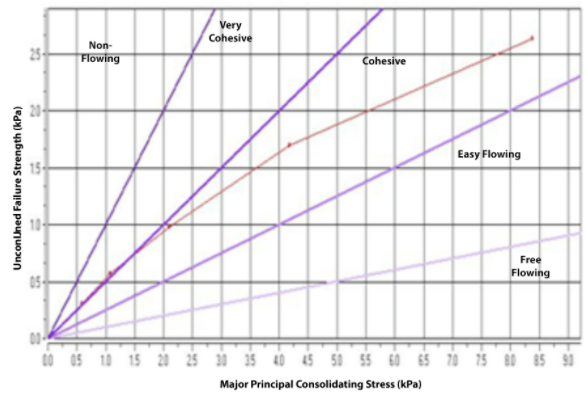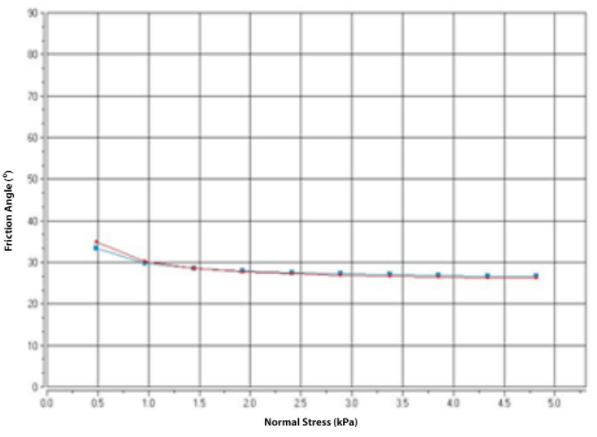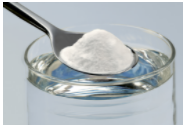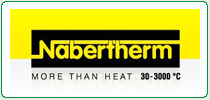USE
Many household uses: baking and cleaning.
TEST EQUIPMENT
Instrument: Powder Flow Tester (PFT)
Trough: 230 cc, 6-inch diameter (Standard Volume)
Lid Type: Vane Lid, 33cc, 6-inch diameter
Wall Lid, 2B finish, 6-inch diameter
Type of Test: Flow Function Test, Wall Friction Test
Temperature: Room Temperature (70-72°F)
Humidity: 48%
METHOD
A Brookfield Powder Flow Tester, equipped with Powder Flow Pro software for automated instrument control and data acquisition, was used to test this name brand baking soda. The baking soda was scooped into the trough, and the scraping tool was then used to evenly distribute the powder throughout the trough. After recording the sample weight and entering it into the software, a standard flow function test and then a wall friction test were run. Time required for each test was 25 minutes and 13 minutes respectively.
PARAMETERS MEASURED
Flowability: Very Cohesive to Cohesive
Wall Friction: 35° to 27°
ANALYSIS
Hopper Shape: Conical
Critical Arching Dimension: 90.2 mm (3.55 in.)
Rat-hole Diameter: Dependent on bin diameter
RESULTS
Figure 1 shows the flowability of the baking soda at different levels of consolidating stress. These results show that the baking soda is generally cohesive except at very low levels of consolidating stress where it begins to fall into the very cohesive range (below 1.5 kPa).
Note: The Flow Function data is indicated by the red line. When interpreting a Flow Function graph, the data is read from the right to the left. The right most data point is indicative of powder flow when the hopper is full; the left most data point is indicative of powder flow when the hopper is almost empty. The purple lines are Standard Flow Indices which distinguish the different types of flow behavior through levels of consolidation, ranging from “free flowing” (bottom segment) to “non-flowing” (top most segment).

Figure 1: Baking Soda Flow Function Graph
Figure 2 represents the angle of wall friction at different levels of normal stress. Angle of wall friction represents the friction between the sliding powder and the wall of the hopper. In this test, a 304 stainless steel lid was used, illustrating what the friction would be like if the baking soda was in a 304 stainless steel hopper. At a low normal stress of about 0.5 kPa, the effective angle of wall friction is about 35º and goes down to about 27º at higher levels of normal stress (4.75 kPa).

Figure 2: Baking Soda Wall Friction Graph
CONCLUSION
The baking soda is a very cohesive powder at low consolidation stress levels and cohesive at high consolidation stress levels. This means that the baking soda may have flowability issues as the hopper empties. Possible flow problems include arching (when the powder forms a cohesive bridge over the outlet); this provides a conservative estimate to prevent arching from happening, provided the minimum outlet dimension of the hopper exceeds this value. The critical rat-holing dimension is dependent on the diameter of the bin. Rat-holing (when the powder flows out only from the center leaving the rest of the material static against the walls) can be automatically calculated by Powder Flow Pro once the bin diameter is entered. The critical arching dimension for this material in this test was determined through Powder Flow Pro to be 3.55 in. (90.2 mm); to avoid a cohesive arch (jam) the opening in the hopper needs to be larger than this value.
>>Download a pdf of this application note.
Contact us : This email address is being protected from spambots. You need JavaScript enabled to view it.

















